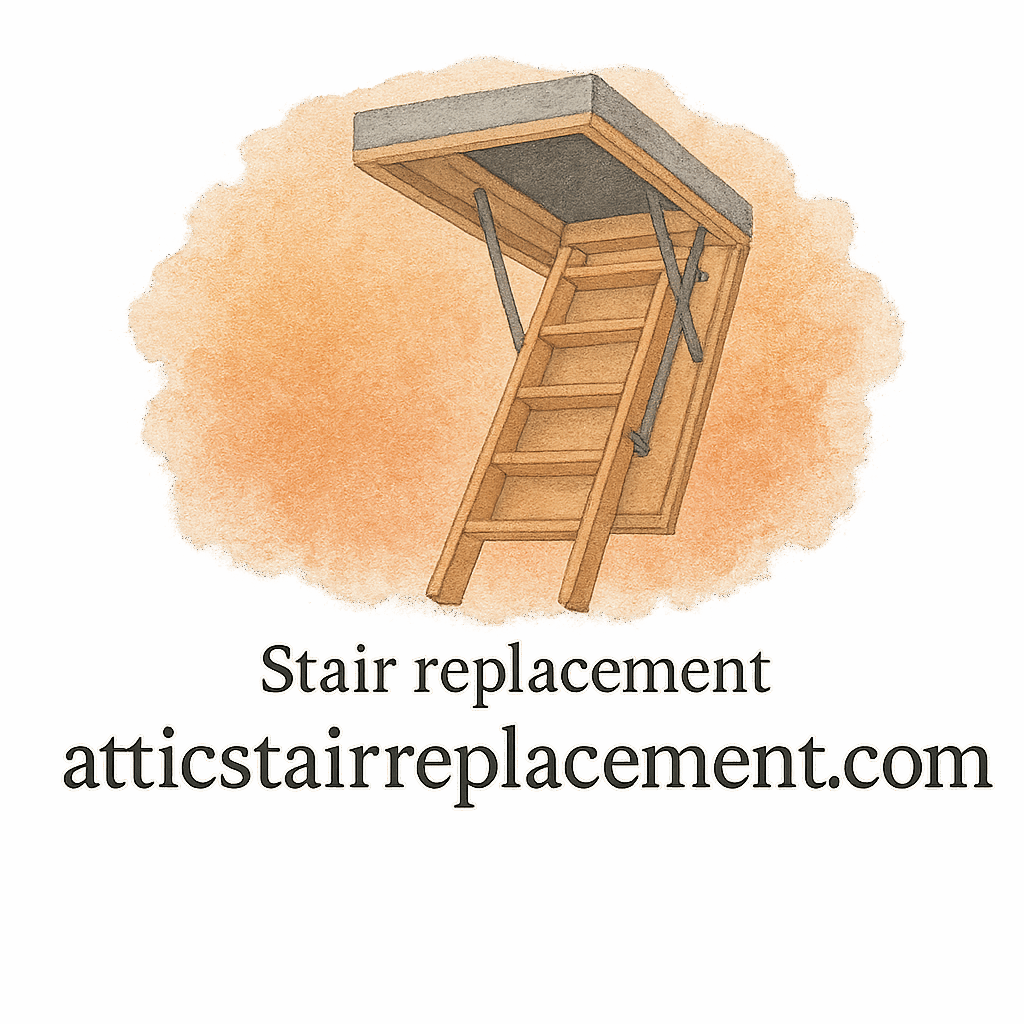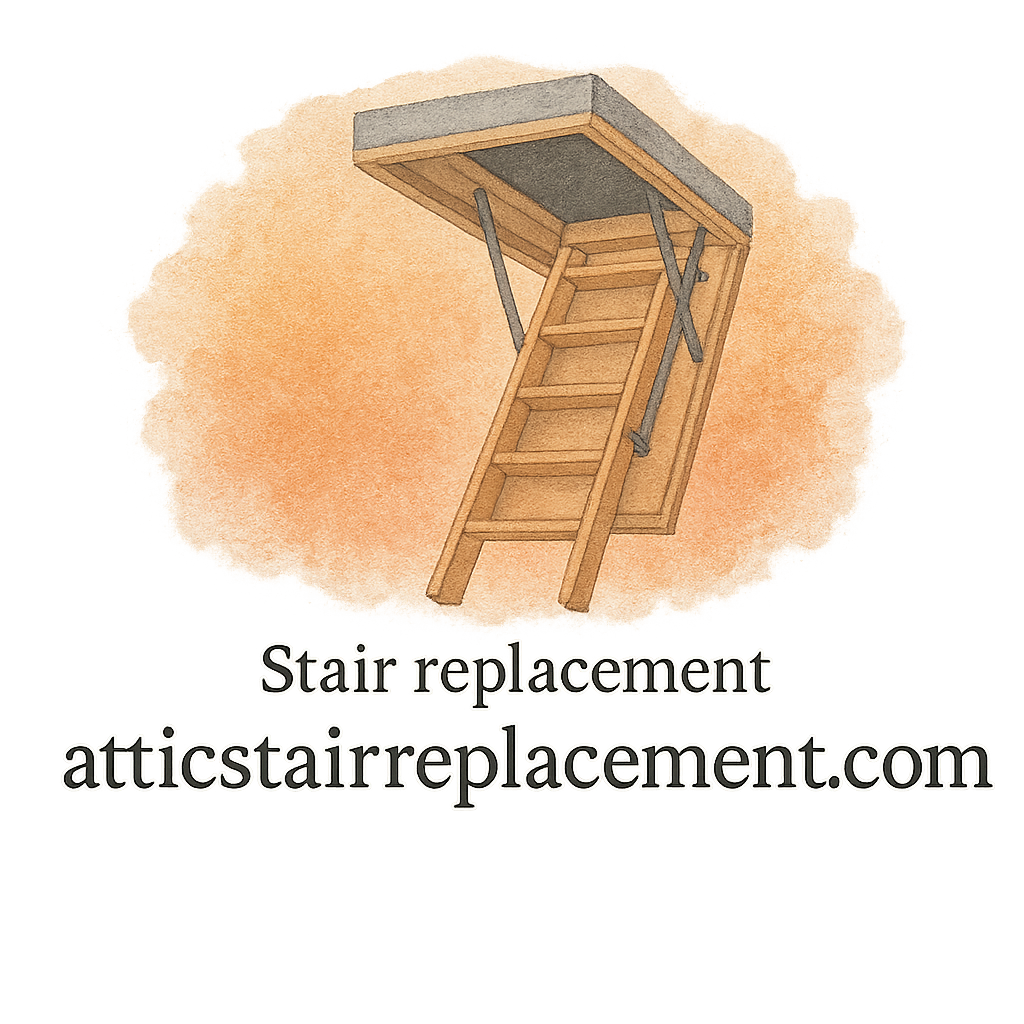Introduction
Thinking about replacing your attic stairs? It might look like a straightforward weekend project, but if you’re not careful, it can quickly turn into a frustrating (and costly) mess. Many homeowners underestimate how much planning and precision attic stair replacement requires. From sizing issues to safety oversights, even the smallest mistakes can lead to major headaches.
In this article, we’ll walk through the 8 most common mistakes to avoid when doing attic stair replacement—and how you can sidestep them for a smooth, safe, and budget-friendly project. Whether you’re tackling this as a DIY home improvement project or considering hiring a contractor, this guide will keep you on the right track.
Why Attic Stair Replacement Matters
Safety and Accessibility
Attic stairs aren’t just another fixture in your home. They’re the gateway to extra storage space—or even a finished attic room. Replacing old, rickety stairs with sturdy, well-installed ones boosts both safety and accessibility. No more creaking, slipping, or worrying about whether your ladder can handle heavy boxes.
Home Value and Functionality
Think of attic stair replacement as a small investment with big returns. A safe, durable staircase improves functionality, adds convenience, and even increases resale appeal. Plus, it can tie into larger home improvement projects like renovations or remodels.
Mistake #1: Choosing the Wrong Size Attic Stairs
Measuring the Opening Incorrectly
One of the biggest blunders? Skipping accurate measurements. If you eyeball the opening instead of measuring twice, you’ll end up with stairs that don’t fit—or worse, force-fit them, leading to unsafe installation. Always measure the opening length, width, and ceiling height before ordering.
Ignoring Ceiling Height and Clearance
Another common oversight is not accounting for ceiling height. If the stairs are too short, you’ll have awkward gaps; too long, and they won’t fold properly. Clearance is also key—without enough space, your stairs may not fully extend.
Mistake #2: Skipping Professional Advice
When DIY Isn’t Enough
Sure, DIY installation is appealing, but it’s not always practical. If you don’t have carpentry experience, cutting corners can lead to costly repairs later.
Why Expert Guidance Can Save You Money
Seeking expert advice before starting ensures you avoid rookie mistakes. Professionals can recommend the right materials, check load-bearing capacity, and even guide you on whether a contractor is necessary.
Mistake #3: Using Low-Quality or Weak Materials
The Risk of Cheap, Non-Durable Options
It’s tempting to grab the cheapest option, but low-quality materials wear out quickly and compromise safety. A flimsy ladder won’t handle heavy loads, leading to accidents.
Investing in Heavy-Duty and Long-Lasting Materials
Choose durable, heavy-duty stairs that can withstand frequent use. Strong materials may cost more upfront but save you in the long run by reducing repairs.

Mistake #4: Ignoring Safety Precautions
Common Safety Hazards During Installation
From slipping tools to unstable ladders, attic stair replacement can be risky if safety isn’t prioritized. Skipping safety gear or rushing through the job puts you at unnecessary risk.
Steps to Prevent Injuries
Wear protective gear, secure your ladder, and follow step-by-step safety tips. Safety isn’t optional—it’s the backbone of a successful project.
Mistake #5: Not Considering Hidden Costs
Material Costs vs. Labor Costs
Another common oversight is failing to factor in all expenses. The price tag on the ladder isn’t the only cost—you may need additional framing, insulation, or professional installation.
Budgeting for Long-Term Maintenance
Don’t forget ongoing expenses like maintenance and repair. Budget for touch-ups and regular inspections to avoid financial surprises later.
Mistake #6: Poor Installation Techniques
Alignment and Stability Issues
Even high-quality stairs can become unsafe if installed incorrectly. Misalignment leads to wobbly steps, poor balance, and dangerous gaps.
Why Hiring a Contractor May Be Worth It
If you’re unsure about your skills, bringing in a contractor ensures job quality. They’ll handle tricky steps, from alignment to sealing air leaks, giving you peace of mind.
Mistake #7: Forgetting About Maintenance Needs
Regular Care and Inspections
Just like any other home fixture, attic stairs require maintenance. Tightening screws, checking hinges, and inspecting for wear keeps them safe.
Repairing Before Problems Escalate
Ignoring small issues—like squeaky hinges or cracks—can lead to expensive replacements. Regular care prevents big headaches.
Mistake #8: Overlooking Energy Efficiency
Insulation and Air Leaks
Attic stairs are often a source of energy loss. Poor insulation allows warm or cool air to escape, raising energy bills.
How Energy-Efficient Designs Save Money
Upgrading to insulated, well-sealed models reduces drafts and saves money. Think of it as killing two birds with one stone—comfort and cost savings.
Tips for a Successful Attic Stair Replacement
Create a Step-by-Step Plan
Having a clear plan avoids mistakes and keeps you organized. From measuring to final installation, follow each step carefully.
Follow Reliable Installation Guides
Use trusted guides and avoid guesswork. Online resources and expert blogs can make your project smoother.
Conclusion
Attic stair replacement may seem simple, but avoiding these 8 mistakes makes all the difference between a smooth upgrade and a costly disaster. Measure carefully, use quality materials, prioritize safety, and don’t be afraid to seek expert help. Whether you’re going the DIY route or hiring a contractor, preparation is the key to success.
Handled right, this project boosts safety, improves home functionality, and even enhances energy efficiency. Handled poorly, it can drain your wallet and create long-term issues. Take your time, plan well, and your attic stair replacement will be a home project you’ll be proud of.
FAQs
1. How long does attic stair replacement usually take?
Most DIY installations take 3–6 hours, but professional installs can be completed faster with higher accuracy.
2. What type of attic stairs are best for heavy use?
Heavy-duty wood or aluminum models are ideal for frequent use and heavy loads.
3. Can I install attic stairs myself without experience?
It’s possible with detailed DIY installation guides, but hiring a contractor ensures safer results.
4. How much should I budget for attic stair replacement?
Expect to spend between $300–$800, including materials, tools, and potential hidden costs.
5. Do attic stairs need regular maintenance?
Yes—tightening screws, oiling hinges, and occasional repairs keep them safe and functional.
6. What’s the most common mistake homeowners make with attic stairs?
Incorrect measurements are the top mistake, often leading to stairs that don’t fit or function properly.
7. How can I make attic stairs more energy-efficient?
Opt for insulated models and properly seal gaps to prevent air leaks. This improves comfort and lowers energy bills.


